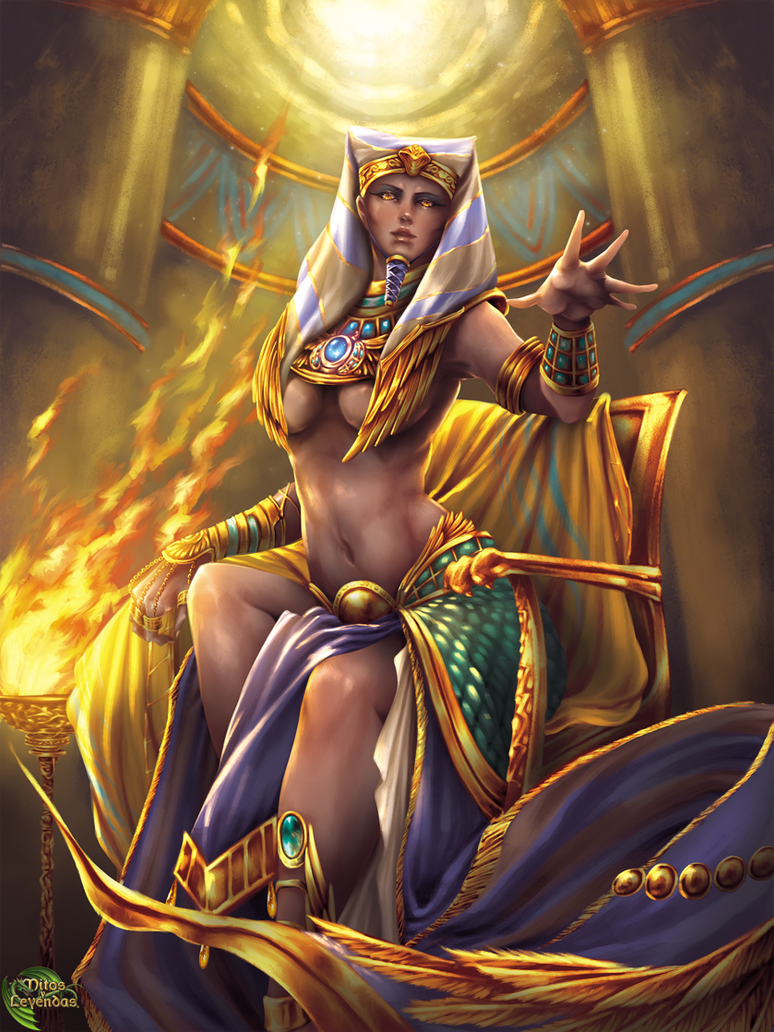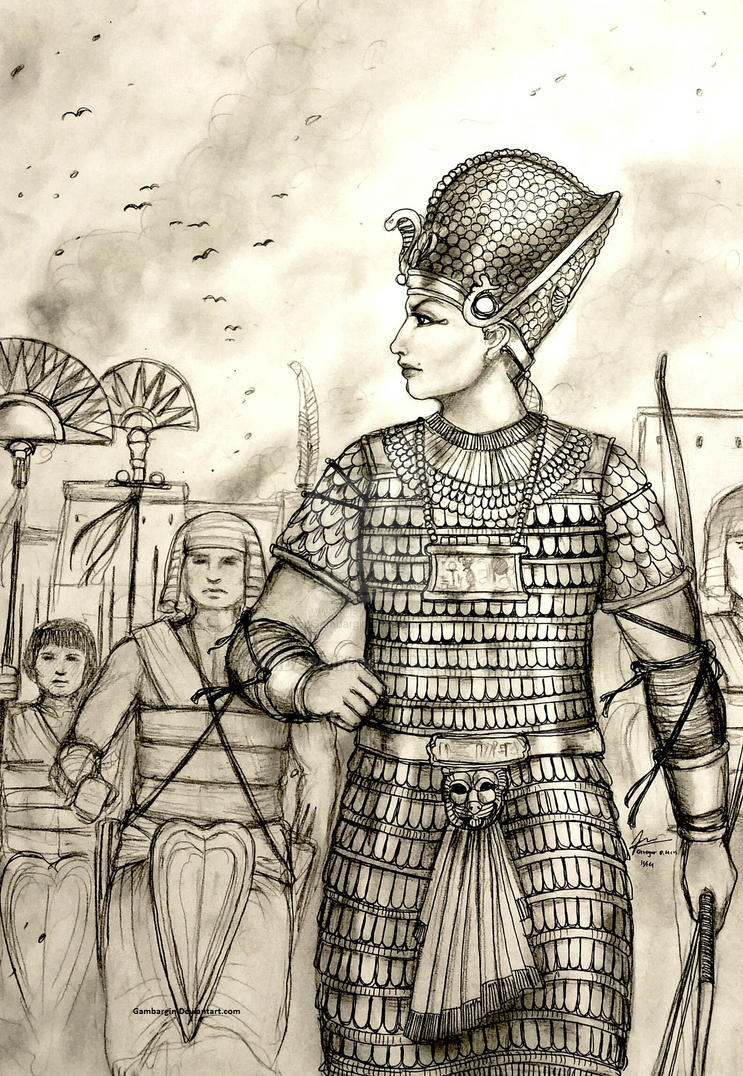Amenhotep & Hatshepsut
AMENHOTEP III
(c.1391 - c.1354 BC)

As the son of Tuthmosis IV and his minor wife Mutemwia, Amenhotep became king at around the age of 12 with his mother acting as regent. Early in his reign he chose the daughter of a provincial official as his great royal wife, and for the rest of the reign Queen Tiy featured prominently alongside the king.
Having inherited an empire that stretched from the Euphrates to the Sudan, Amenhotep maintained Egypt's position largely through diplomacy and intermarriage with the royal families of Mitanni (Syria), Babylonia and Arzawa (Anatolia). He was the first pharaoh to issue royal news bulletins about his marriages, hunting trips and building projects, the information being inscribed on large stone scarab seals and sent out across the empire.
At the imperial capital Thebes, the king's sprawling palace at Malkata lay close to his funerary temple, the largest ever built with its original location marked by the two 'Colossi of Memnon' statues. A vast harbour and canal network linked these buildings to the Nile and allowed direct access to the king's new temple at Luxor and the great state temple of Amun at Karnak.
Although Amenhotep greatly embellished Karnak as part of his nationwide building programme, the growing power of Amun's clergy was skilfully countered by promoting the ancient sun god Ra. The sun was also worshipped as the solar disc the Aten, with whom the king identified himself by taking the epithet 'Dazzling Aten'.
Amenhotep III died in around 1354 BC and was buried in his huge tomb in the secluded western branch of the Valley of the Kings. He was succeeded by his son Amenhotep IV, better known as Akhenaten.
HATSHEPSUT

A daughter of King Thutmose I, Hatshepsut became queen of Egypt when she married her half-brother, Thutmose II, around the age of 12. Upon his death, she began acting as regent for her stepson, the infant Thutmose III, but later took on the full powers of a pharaoh, becoming co-ruler of Egypt around 1473 B.C. As pharaoh, Hatshepsut extended Egyptian trade and oversaw ambitious building projects, most notably the Temple of Deir el-Bahri, located in western Thebes, where she would be buried. Depicted (at her own orders) as a male in many contemporary images and sculptures, Hatshepsut remained largely unknown to scholars until the 19th century.
Hatshepsut was the elder of two daughters born to Thutmose I and his queen, Ahmes. After her father’s death, 12-year-old Hatshepsut became queen of Egypt when she married her half-brother Thutmose II, the son of her father and one of his secondary wives, who inherited his father’s throne around 1492 B.C. They had one daughter, Neferure. Thutmose II died young, around 1479 B.C., and the throne went to his infant son, also born to a secondary wife. According to custom, Hatshepsut began acting as Thutmose III’s regent, handling affairs of state until her stepson came of age.
Did you know? Hatshepsut was only the third woman to become pharaoh in 3,000 years of ancient Egyptian history, and the first to attain the full power of the position. Cleopatra, who also exercised such power, would rule some 14 centuries later.
Hatshepsut as Pharaoh
Knowing that her power grab was highly controversial, Hatshepsut fought to defend its legitimacy, pointing to her royal lineage and claiming that her father had appointed her his successor. She sought to reinvent her image, and in statues and paintings of that time, she ordered that she be portrayed as a male pharaoh, with a beard and large muscles. In other images, however, she appeared in traditional female regalia. Hatshepsut surrounded herself with supporters in key positions in government, including Senenmut, her chief minister. Some have suggested Senenmut might also have been Hatshepsut’s lover, but little evidence exists to support this claim.
As pharaoh, Hatshepsut undertook ambitious building projects, particularly in the area around Thebes. Her greatest achievement was the enormous memorial temple at Deir el-Bahri, considered one of the architectural wonders of ancient Egypt. Another great achievement of her reign was a trading expedition she authorized that brought back vast riches–including ivory, ebony, gold, leopard skins and incense–to Egypt from a distant land known as Punt (possibly modern-day Eritrea).
Hatshepsut’s Death and Legacy
Hatshepsut probably died around 1458 B.C., when she would have been in her mid-40s. She was buried in the Valley of the Kings, located in the hills behind Deir el-Bahri. In another effort to legitimize her reign, she had her father’s sarcophagus reburied in her tomb so they could lie together in death. Thutmose III went on to rule for 30 more years, proving to be both an ambitious builder like his stepmother and a great warrior. Late in his reign, Thutmose III had almost all of the evidence of Hatshepsut’s rule–including the images of her as king on the temples and monuments she had built–eradicated, possibly to erase her example as a powerful female ruler, or to close the gap in the dynasty’s line of male succession. As a consequence, scholars of ancient Egypt knew little of Hatshepsut’s existence until 1822, when they were able to decode and read the hieroglyphics on the walls of Deir el-Bahri.
In 1903, the British archeologist Howard Carter discovered Hatshepsut’s sarcophagus (one of three that she had prepared) but it was empty, like nearly all of the tombs in the Valley of the Kings. After launching a new search in 2005, a team of archaeologists discovered her mummy in 2007; it is now housed in the Egyptian Museum in Cairo.
Information taken from https://www.history.com/topics/ancient-history/hatshepsut
A very interesting article about Hatshepsut (very well written too): https://www.smithsonianmag.com/history/the-queen-who-would-be-king-130328511/
A very simple but well explained video about Hatshepsut's reign: https://www.youtube.com/watch?v=LqhN7-gCSSs
 |
| Mortuary Temple of Hatshepsut |
Here's a few pieces of art inspired by Hatshepsut found on DeviantArt
 |
Hatshepsutby shoomlah on DeviantArt |
 |
Hatshepsutby YunaXD |
 |
Hatshepsutby Annezon |

Comments
Post a Comment